Senmaizuke is a Japanese pickle that offers a perfect balance of tanginess, saltiness, and sweetness. It can also be enjoyed as a salad ingredient or used as a refreshing palate cleanser.
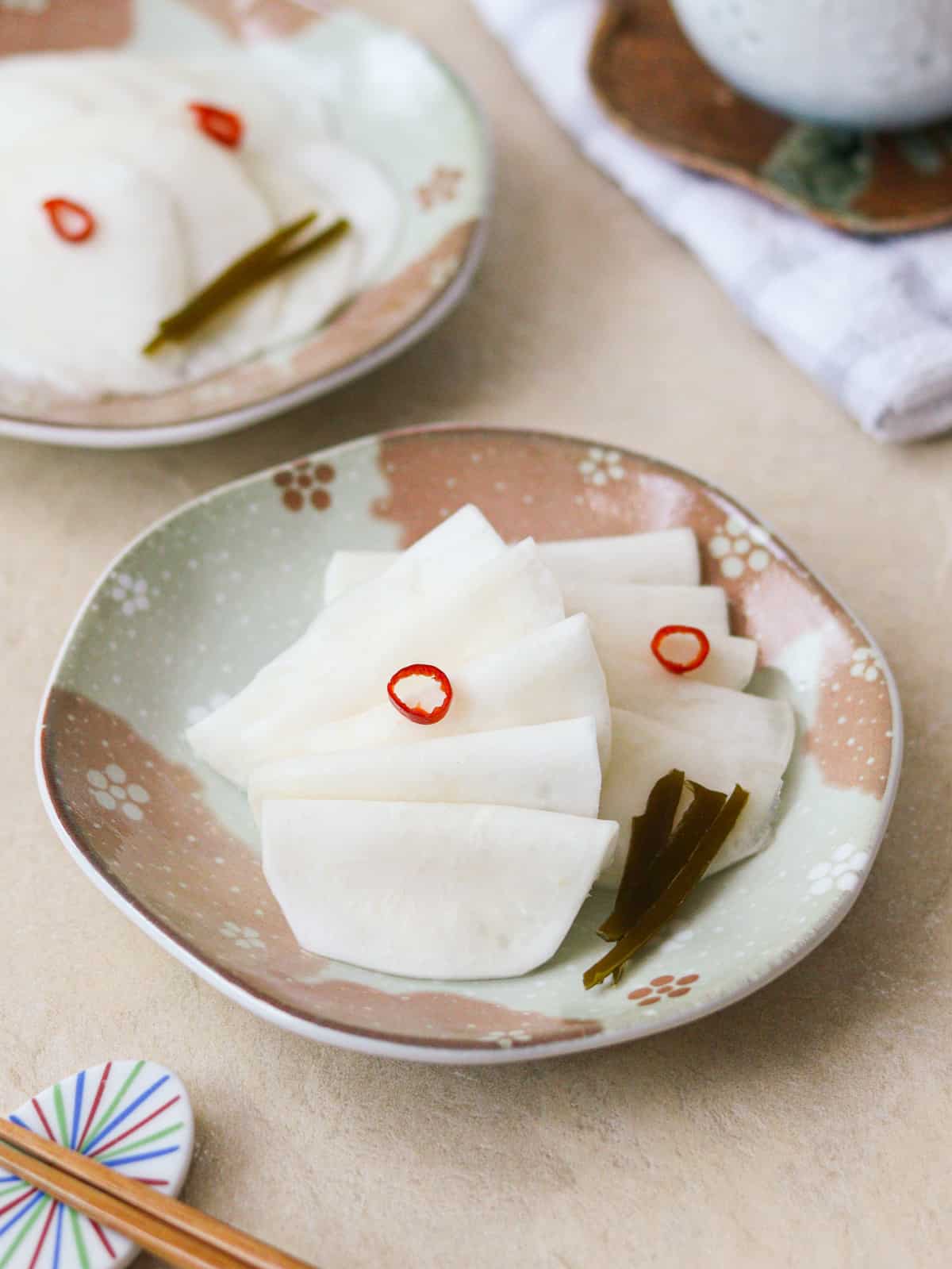
Jump to:
What is Senmaizuke?
Senmaizuke is a Japanese pickle made by thinly slicing turnips and pickling them in a sweet and salty vinegar mixture with a small amount of kombu (kelp) and chili pepper. "Senmai" means a thousand sheets, and "zuke" refers to pickling. The name comes from the practice of cutting a large number of turnips into thin slices and pickling them in a barrel, resulting in a total of over a thousand slices.
Originally from Kyoto, this pickle is considered one of the three most famous pickles in Kyoto, along with Shibazuke and Sugukizuke, and is now enjoyed all over Japan. The crunchy texture of the turnips and the sweet and tangy taste make this pickle irresistible.
Types of turnips used
In traditional senmaizuke, 'Shogoin turnips' are used. Shogoin turnips are a specialty of Kyoto, harvested only in the winter and weighing around 8.8-11 lb (4-5 kg) with a diameter of about 5.9-7.8 inches (15-20 cm).
However, since they are not widely available even in Japan, many Japanese households use regular Japanese turnips instead (such as 'Tokyo turnips' or 'Hakurei turnips'). There is no significant difference in taste among these varieties.
Japanese turnips are known for their slight sweetness and lack of spiciness or bitterness. What about the turnips available in your area? If the turnips in your area don't have a similar profile to Japanese ones, you might need to use small, young turnips that are mild enough to eat raw or find Japanese turnips at an Asian market.
Although the texture may be different, you can substitute them with daikon radish.
Cutting technique
The way you cut turnips can influence the texture of senmaizuke. Cutting them horizontally breaks the fibers, allowing the flavors to blend easily and giving them a pleasant texture on the tongue.
While it is common to keep the turnips in a round shape after cutting, slicing them in half or into quarters is also acceptable depending on your preference.
Traditional recipe
Senmaizuke is traditionally prepared by pickling turnips in salt for several days to drain their moisture, and then pickling them in sweet vinegar for several more days. It is possible to achieve this at home, but since it takes 4 to 6 days to make, Japanese households generally shorten these processes, as indicated in the recipe on this page.
However, if you are interested in the original method of preparing senmaizuke, try making it in the following way. This is the traditional style still used in Kyoto today.
- Peel turnips, slice them into very thin rounds and place them in a container, shifting slightly so that they don't overlap completely.
- Add salt to the turnips, massage them, and then let them sit in a cool, dark place (or in the refrigerator) for a few days to help remove excess moisture.
- Drain them using a colander.
- Arrange them in the container again, shifting slightly so that they don't overlap completely, and place kombu and chili peppers over them.
- Add rice vinegar and sugar to the container, and let it sit in a cool, dark place (or in the refrigerator) for a few days.
This method improves the texture and taste of the turnips, resulting in a more delicious finish. If you aim to create the best possible flavor, it is definitely worth trying.
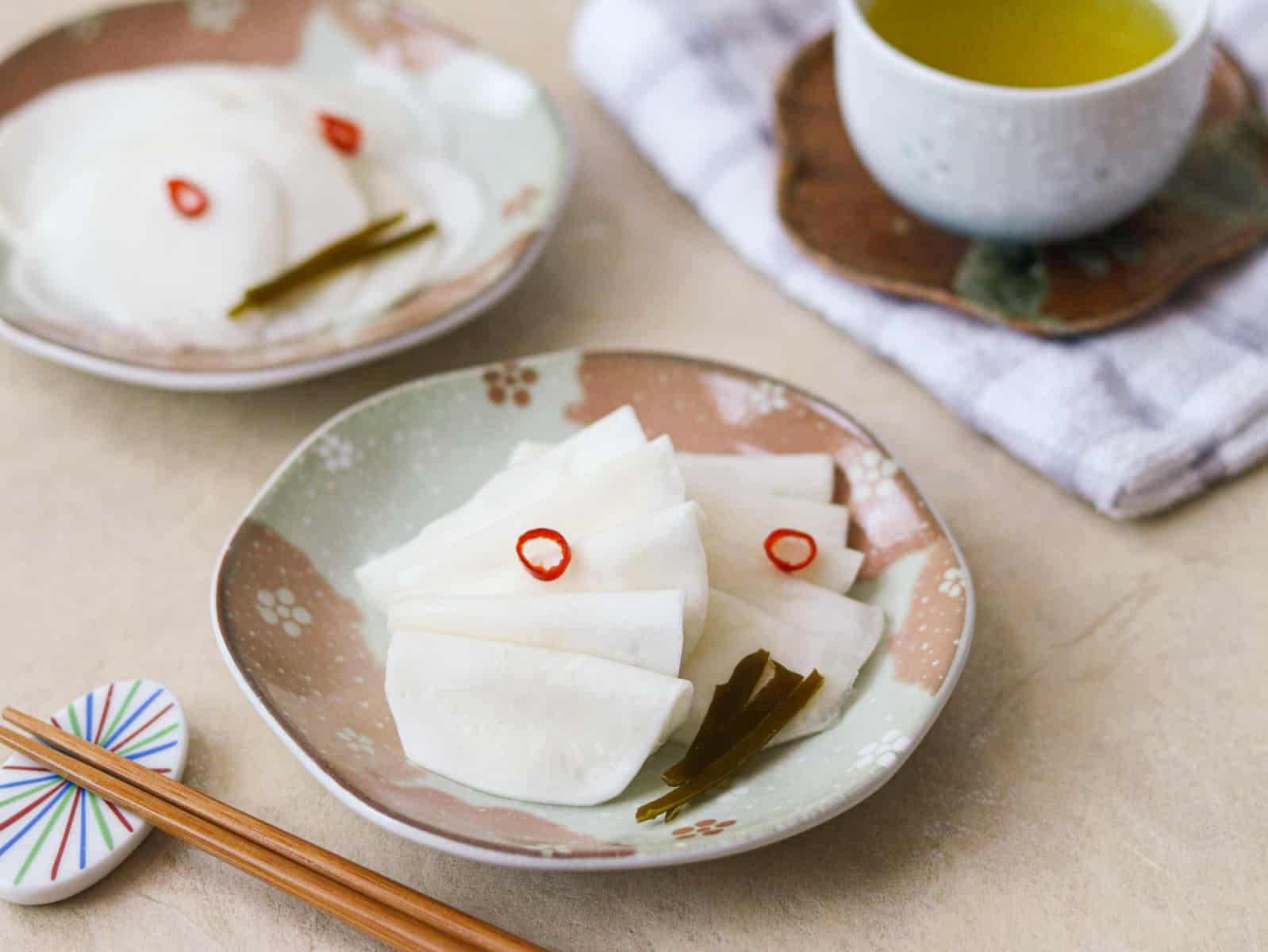
📋Step-by-step recipe
Ingredients
- 8 oz Japanese turnips
- 0.1 oz kombu (dried kelp)
- ½ chili pepper
Seasonings:
- 1 ½ Tbsp sugar
- 1 tsp salt
- 1 Tbsp rice vinegar
Instructions
🕒 Total: 8 hrs 10 mins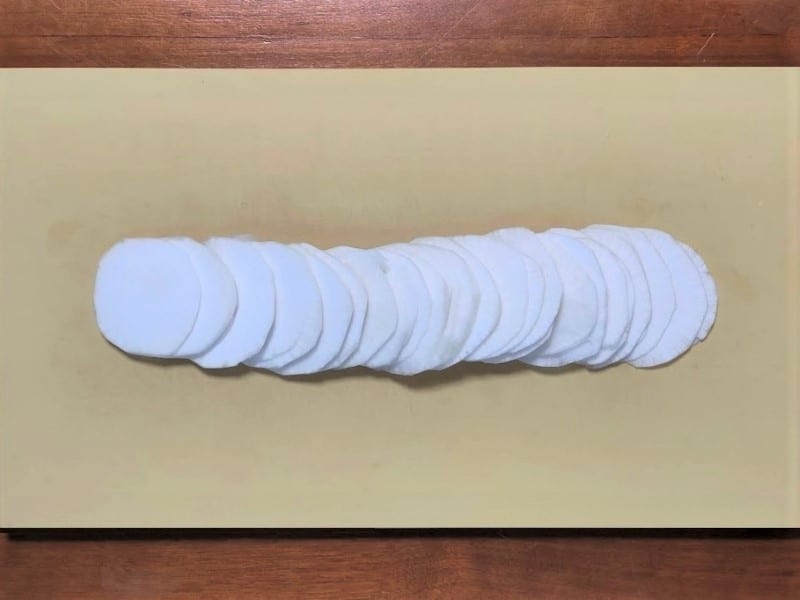
Step 1
Remove the stems and roots from turnips, then peel them thickly. Slice them into very thin rounds.
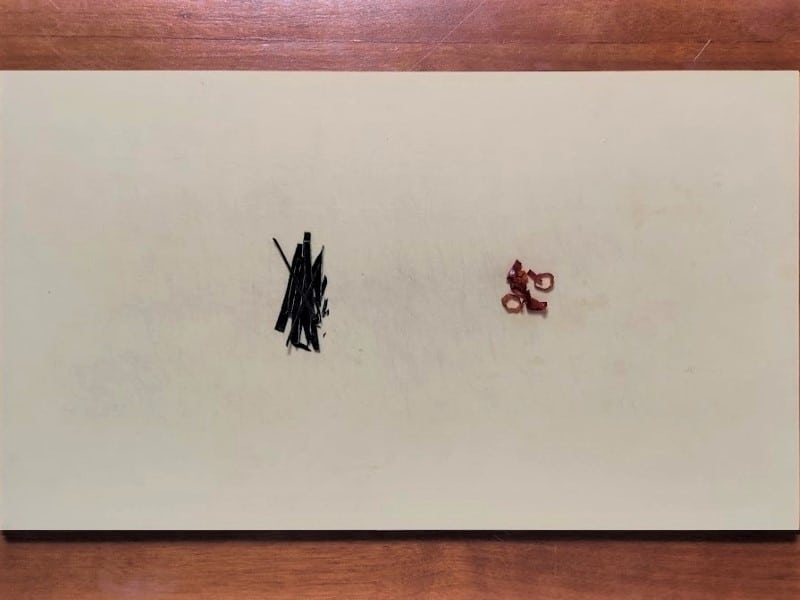
Step 2
Cut kombu into long, thin strips using kitchen shears. Remove the seeds from the chili pepper and cut it into rounds.
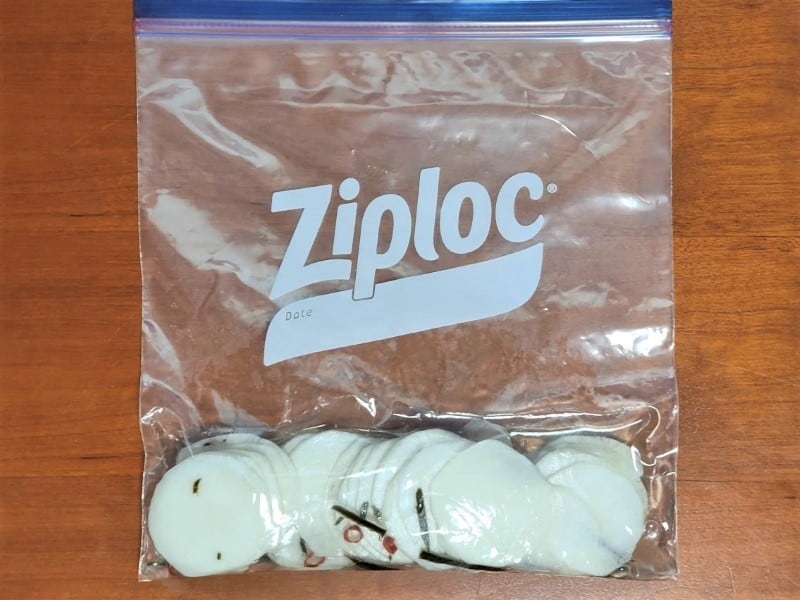
Step 3
Combine the sliced turnips, kombu, chili pepper, and seasonings (sugar, salt, and rice vinegar) in a Ziploc bag and seal it, removing as much air as possible. Let the mixture pickle in the refrigerator for at least 8 hours (the longer it pickles, the more flavor the turnips will absorb).
To store
You can store it in the refrigerator for up to 5 days.
Tips on how to make
- Peel the turnips thickly. Removing the fibrous parts near the skin will improve their texture.
- Cut the kombu into long, thin strips. This will allow you to enjoy its texture as a complement to senmaizuke. However, if you don't eat kombu, this process is unnecessary.
If you try this recipe, I’d love to hear what you think. Please consider leaving a review and star rating in the comments below. If you enjoyed it, I’d really appreciate it if you shared it with your friends.
Recipe card
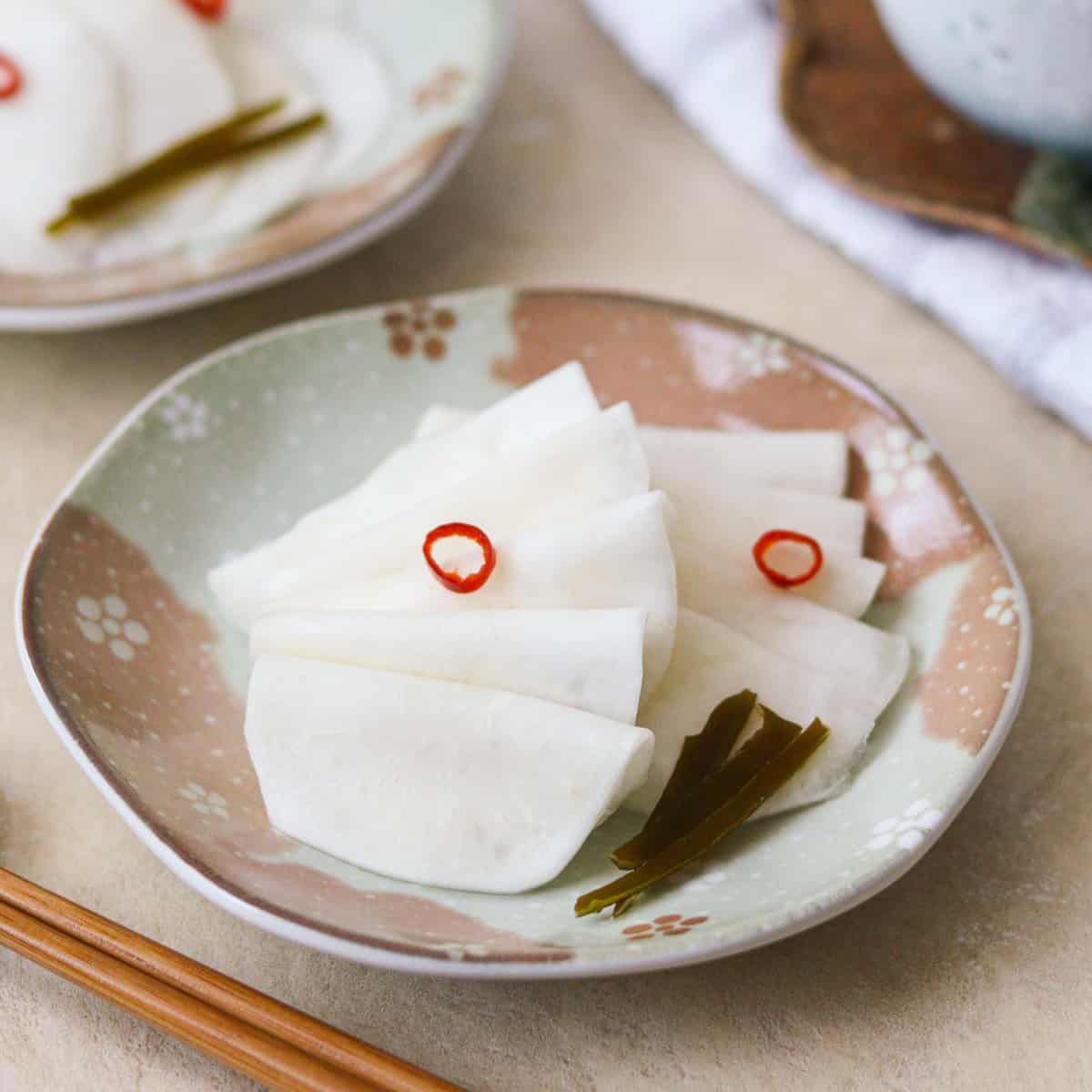
Senmaizuke (Japanese Pickled Turnips)
Ingredients
- 8 oz Japanese turnips
- 0.1 oz kombu (dried kelp)
- ½ chili pepper
Seasonings:
- 1 ½ Tbsp sugar
- 1 tsp salt
- 1 Tbsp rice vinegar
Instructions
- Remove the stems and roots from turnips, then peel them thickly. Slice them into very thin rounds.
- Cut kombu into long, thin strips using kitchen shears. Remove the seeds from the chili pepper and cut it into rounds.
- Combine the sliced turnips, kombu, chili pepper, and seasonings (sugar, salt, and rice vinegar) in a Ziploc bag and seal it, removing as much air as possible. Let the mixture pickle in the refrigerator for at least 8 hours (the longer it pickles, the more flavor the turnips will absorb).
Notes
- You can store it in the refrigerator for up to 5 days.

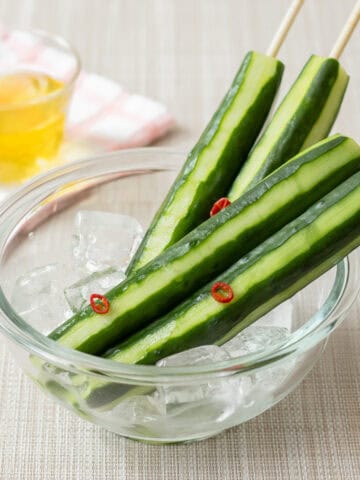
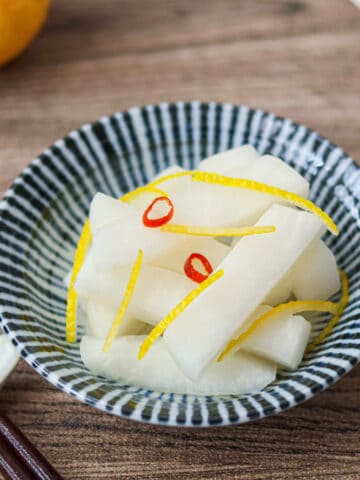
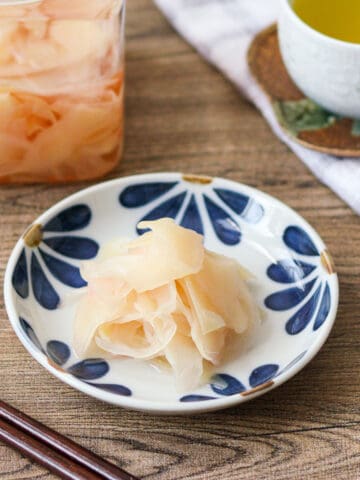
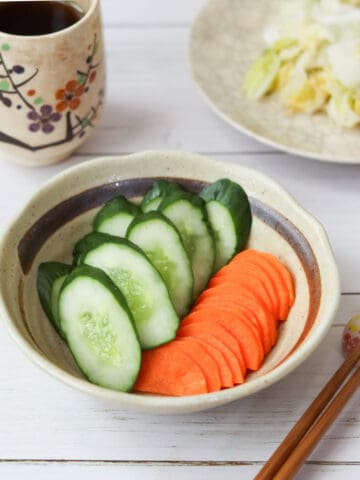
Leave a Rating and a Comment